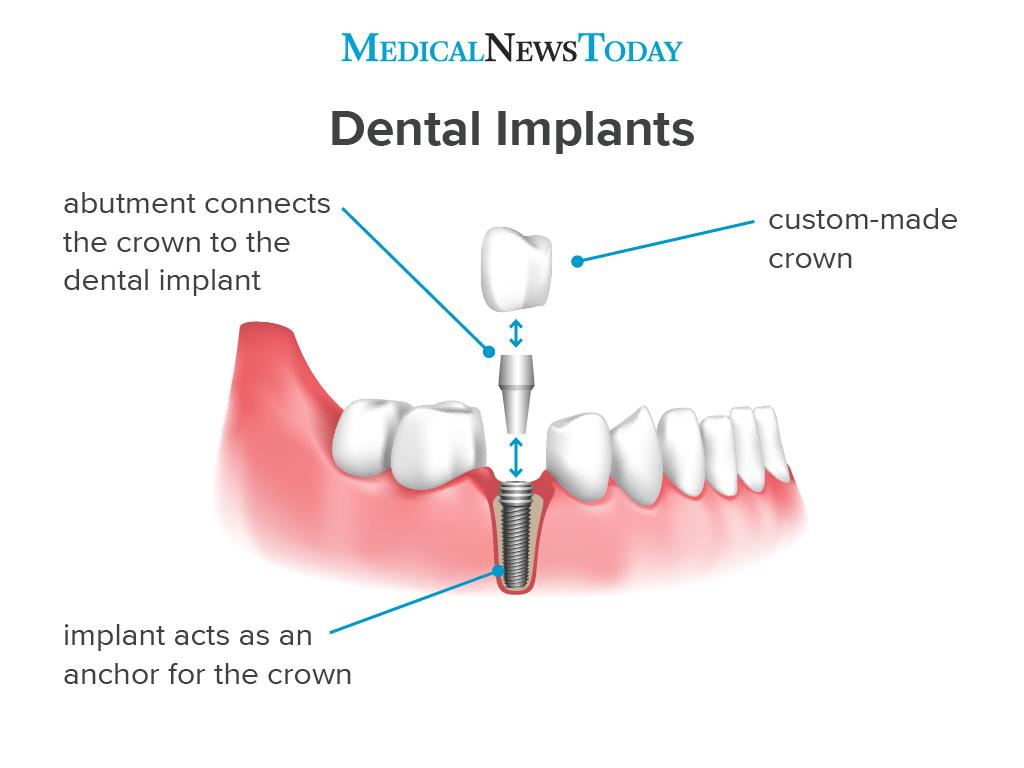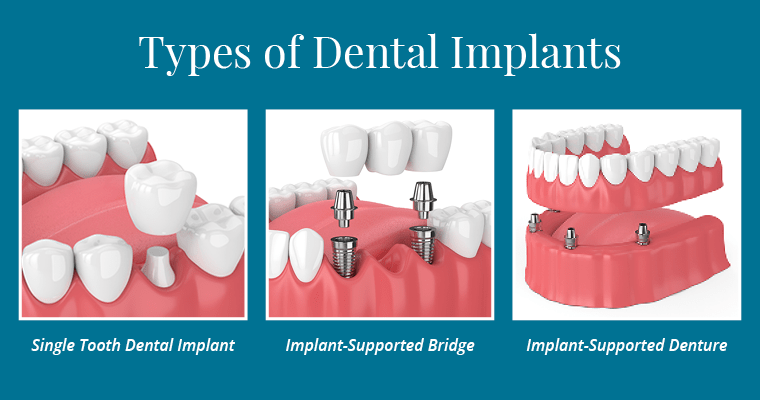The Main Principles Of Dental Implants
The Main Principles Of Dental Implants
Blog Article
Dental Implants Can Be Fun For Anyone
Table of ContentsThe Of Dental ImplantsDental Implants for Dummies3 Simple Techniques For Dental ImplantsSee This Report on Dental Implants
are clinical devices surgically dental implanted into the jaw to bring back an individual's capacity to chew or their appearance. They provide assistance for synthetic (phony) teeth, such as crowns, bridges, or dentures. When a tooth is lost as a result of injury or illness, a person can experience issues such as rapid bone loss, defective speech, or adjustments to chewing patterns that result in pain.
Structure of The Dental Implant System picking dental implants, talk to your dental service provider regarding the prospective advantages and dangers, and whether you are a candidate for the procedure. Things to consider: Your total health is an essential consider determining whether you are an excellent candidate for oral implants, how much time it will require to recover, and how much time the dental implant might remain in location.
Cigarette smoking may influence the healing procedure and decrease the long-lasting success of the dental implant. The recovery procedure for the dental implant body may take a number of months or longer, during which time you generally have a momentary abutment instead of the tooth. the oral implant procedure: Carefully comply with the oral health instructions given to you by your dental supplier.
The smart Trick of Dental Implants That Nobody is Discussing
Implant failure can result in the need for an additional surgery to fix or replace the implant system. Brings back the capability to eat Recovers aesthetic look Helps keep the jawbone from reducing due to bone loss Preserves the health of the surrounding bone and gums Helps keep nearby (close-by) teeth steady Enhances lifestyle Damages to surrounding natural teeth throughout dental implant placement Injury to the surrounding cells during surgical treatment, such as sinus opening Injury throughout surgery (for example, fracture of bordering jawbone) Poor feature, such as seeming like the teeth do not attack with each other generally A feeling that the tooth hangs or turning in position arising from an abutment screw loosening up Implant body failing (looseness of the implant body) due to systemic infection, which may be most likely in clients with unrestrained diabetes mellitus as a result of regional infection in bone and periodontals sustaining the dental implant body because of delayed recovery, which might be most likely in patients who smoke Difficulty cleaning the gum tissues around the implant, resulting in inadequate oral health Unattended gum disease Post-surgical feeling numb because of nerve impingement or damage Constantly notify wellness care service providers and imaging technicians that you have oral implants before any kind of magnetic resonance imaging (MRI) or x-ray procedures.
FDA is not knowledgeable about any damaging events reported for MRI or x-ray treatments with dental implants. Oral implants systems are generally made of products that follow global consensus criteria of the International Organization for Standardization (ISO) or ASTM International. These criteria have details of a knockout post what makes a risk-free material.
Oral dental implant systems are assessed according to worldwide agreement requirements. Biocompatibility testing, to reveal that physical contact with the device does not cause problems like inflammation or allergic reaction, is part of the evaluation that helps guarantee the materials in the dental implant system are safe and do not trigger negative impacts when dental implanted in people.

Not known Facts About Dental Implants
Some individuals are not qualified for oral implant surgical treatment. It is for dental specialists to operate individuals with: intense illnessuncontrollable metabolic diseasebone or soft cells find out here condition or infectionIf these concerns are dealt with, a person can have the surgical treatment. Dental Implants. In, oral surgeons avoid operating people with: If individuals with any one of the above go through dental implant surgical treatment, there is a higher danger of the implant failing
Some individuals have a jawbone problem that avoids enough bone for a dental implant from establishing. The cosmetic surgeon will certainly then use a bone or bone replacement to repair and build up the location.
Dental dental implant surgical treatment is a personalized procedure. It's not the exact same for everyone. However the following offers a general introduction of what you can expect your dental professional, oral doctor, periodontist or prosthodontist to do: Put the dental implant surgically. Offer you time to heal. Affix the message and last crown, bridge or denture.
Next off, your cosmetic surgeon will carefully position the oral implant into your jaw. Your cosmetic surgeon will certainly rearrange your gums and close the laceration with stitches (Dental Implants). If your implant is near the front of your mouth, your dental expert will certainly make a short-term tooth for you to use till you heal. That method, you will not have a gap in your smile while you recuperate.
The 8-Minute Rule for Dental Implants
Your copyright can inform you what to anticipate in your scenario. Throughout the recovery stage, your jawbone should fuse to the Full Report dental implant. This procedure, called osseointegration, is important for security and long-term success. This procedure can take anywhere from 3 to nine months. In many cases, it might take much longer.
When your dental implant heals, your dentist can connect the joint (tiny port article) and your last remediation (crown, bridge or denture). This generally takes concerning one hour to complete and might call for a 2nd minor surgery. You should not feel any type of discomfort throughout your oral implant procedure because your copyright will certainly utilize medicine to numb your gum tissues.
Report this page